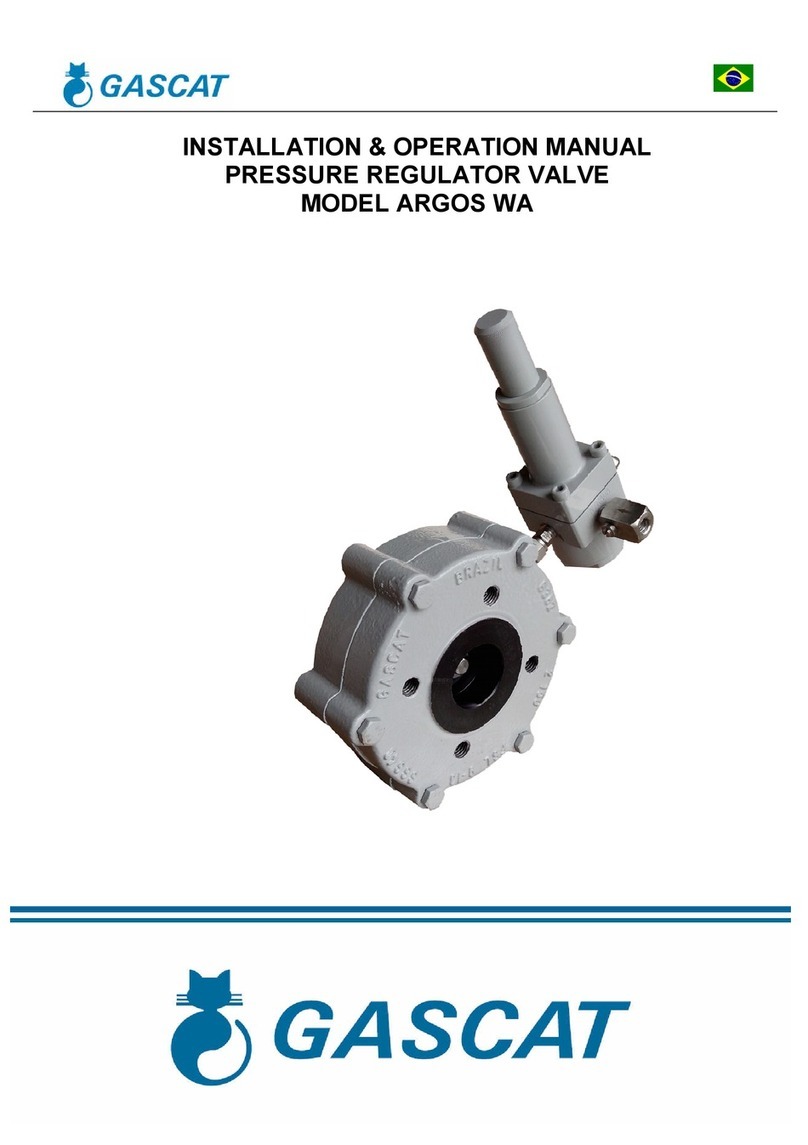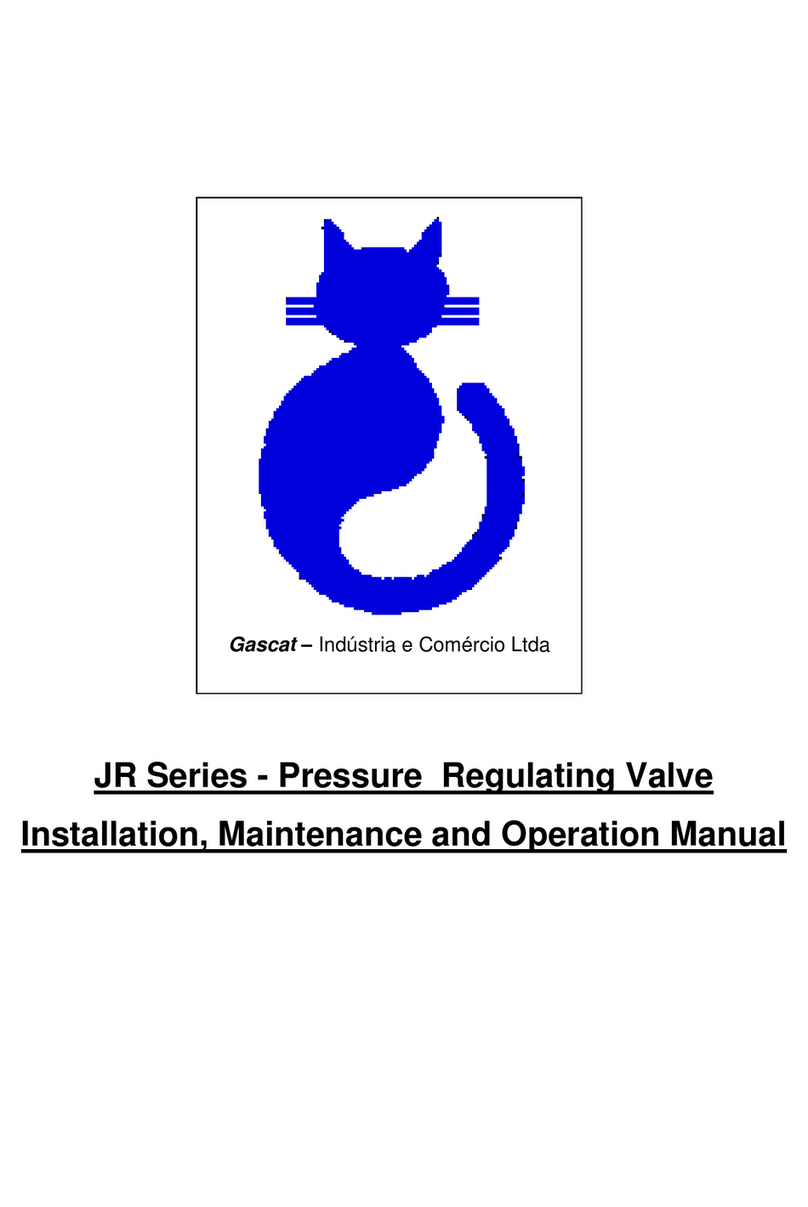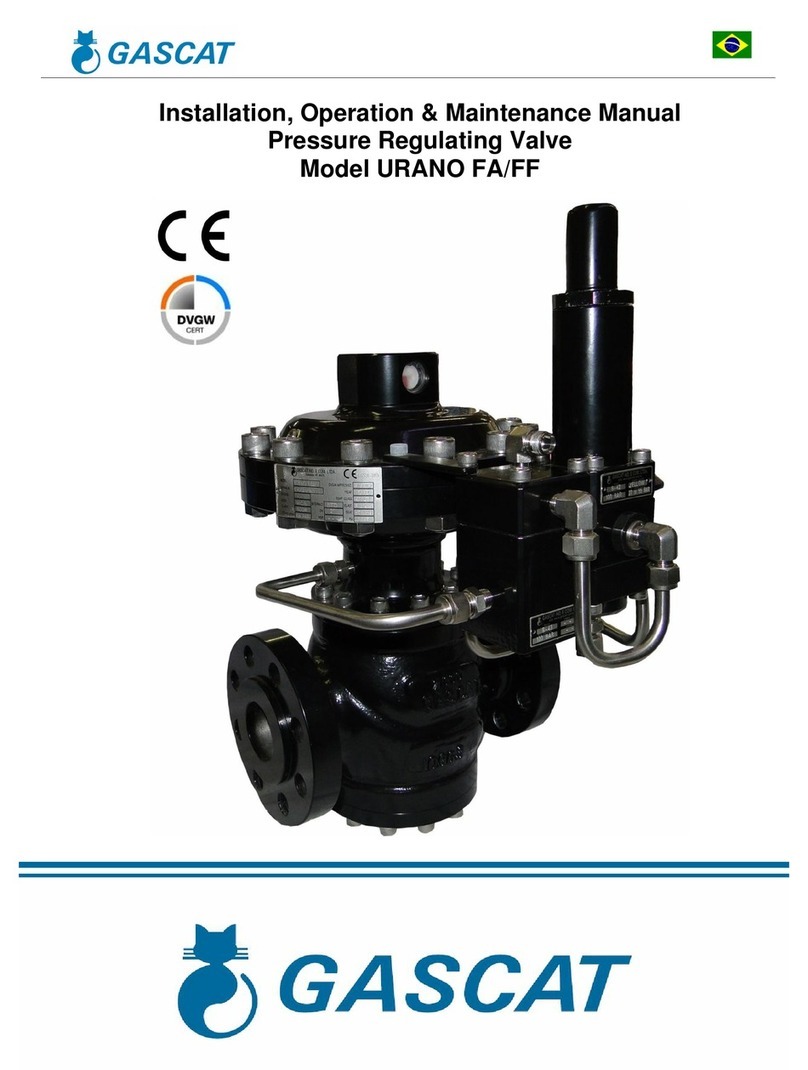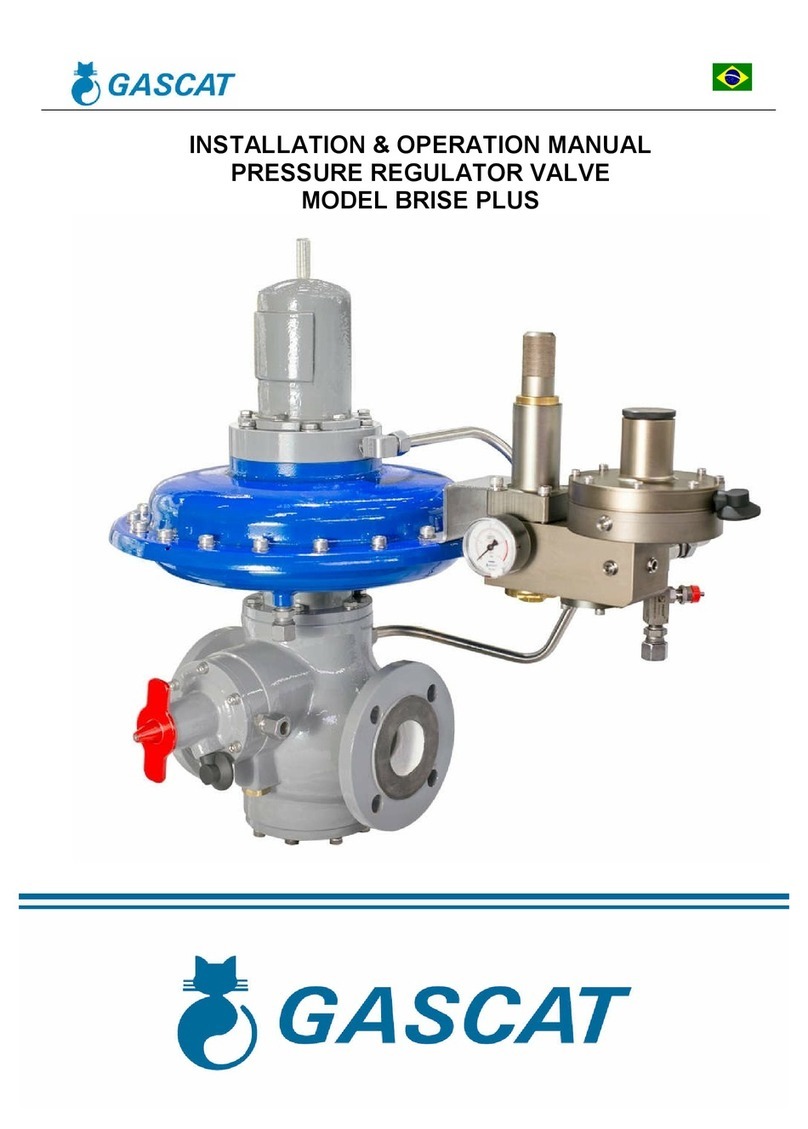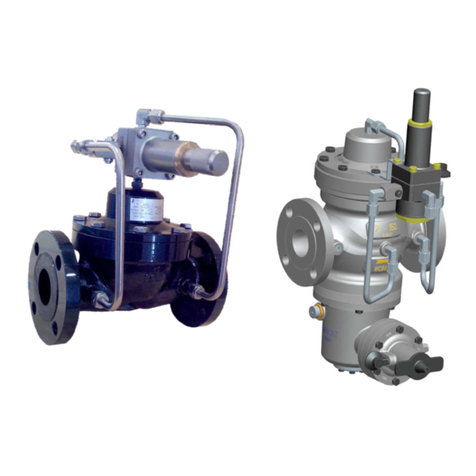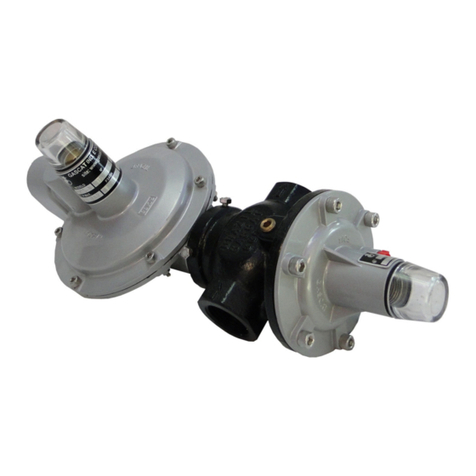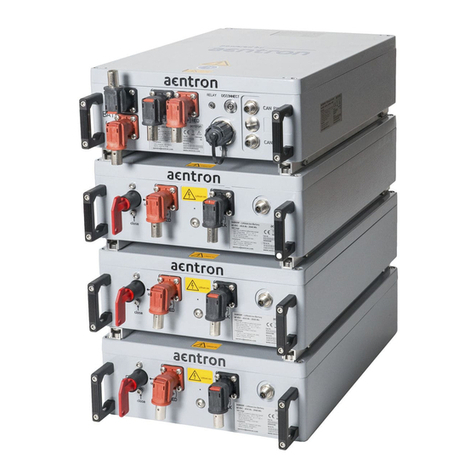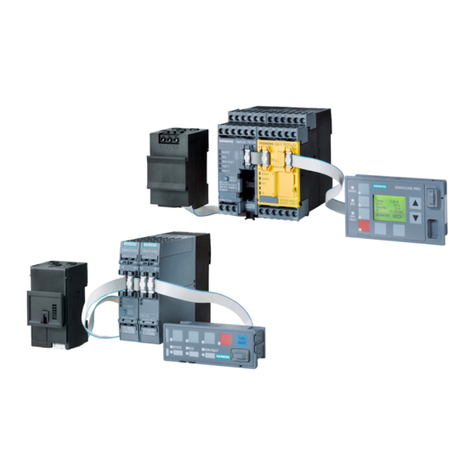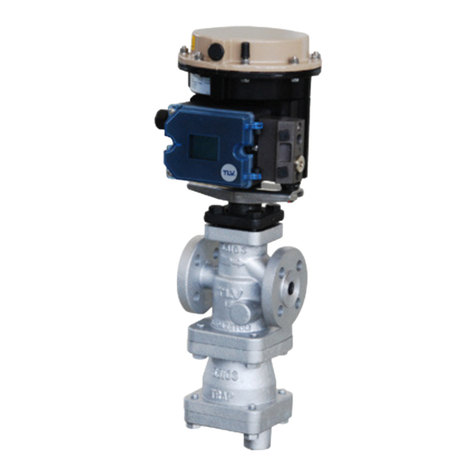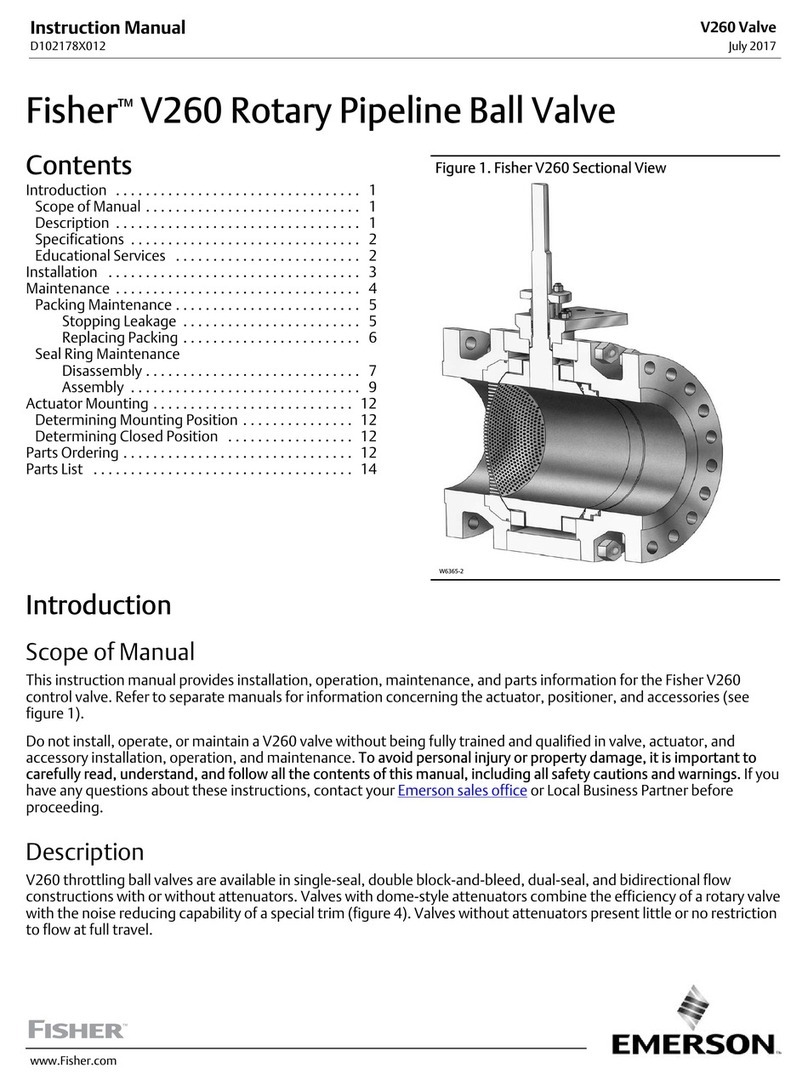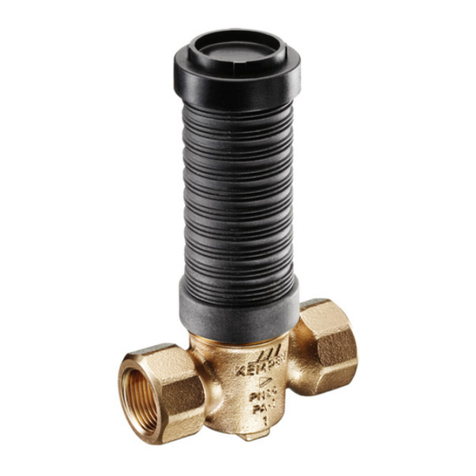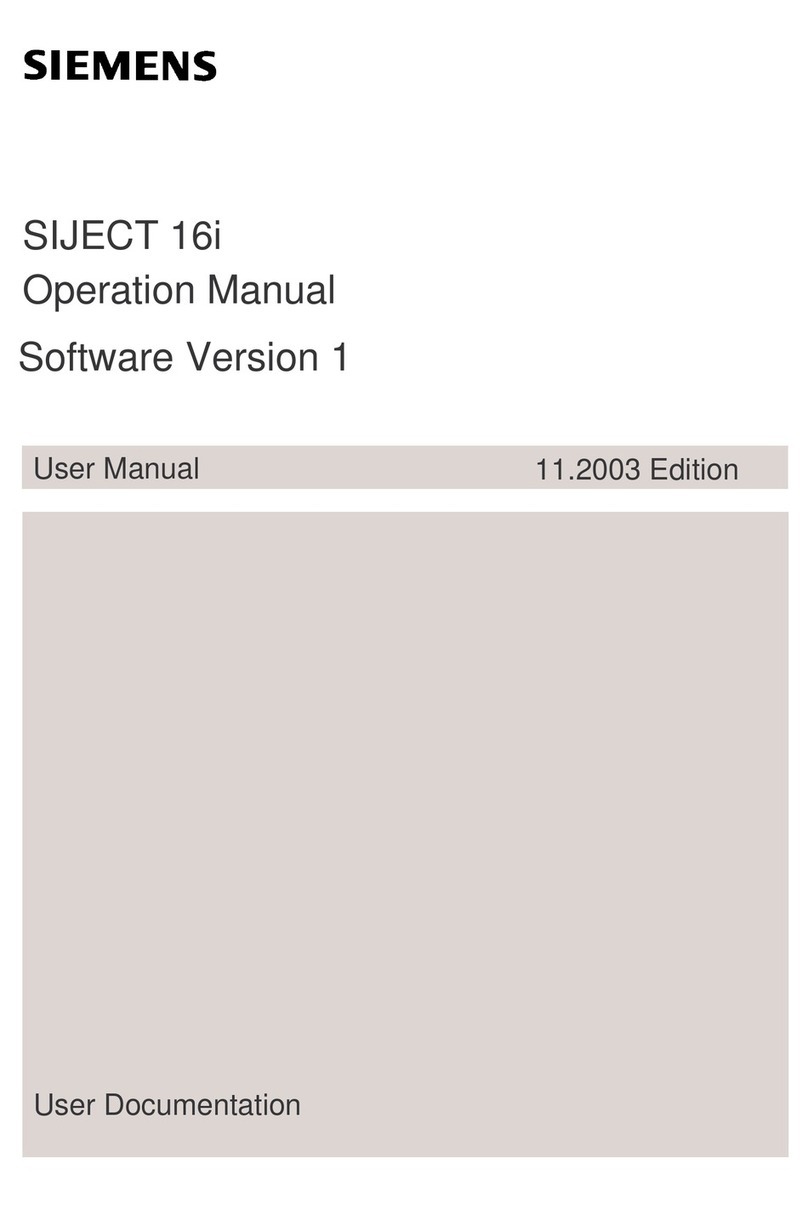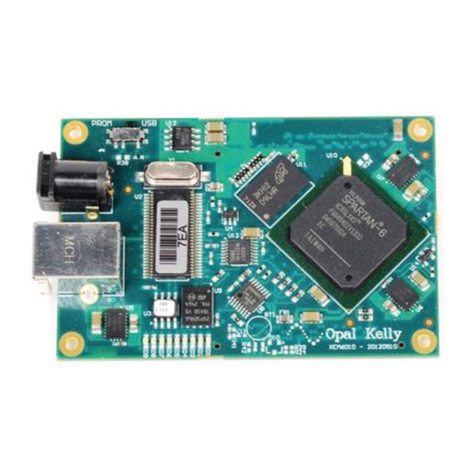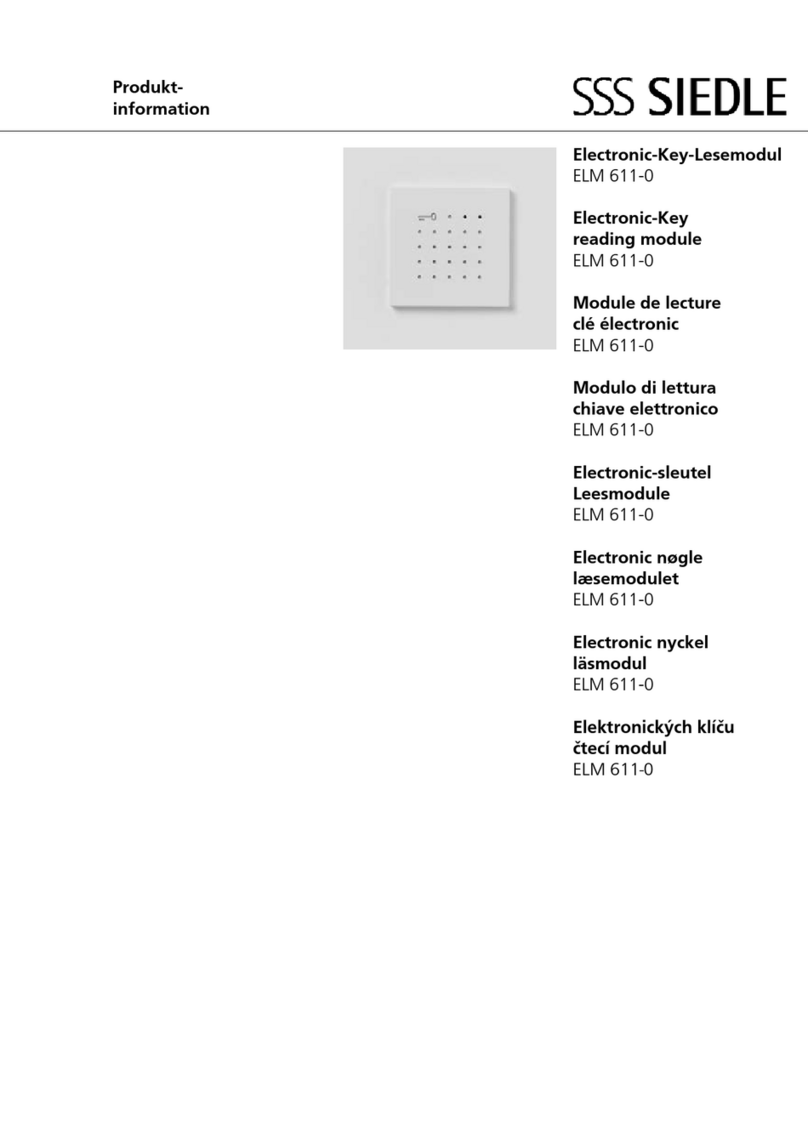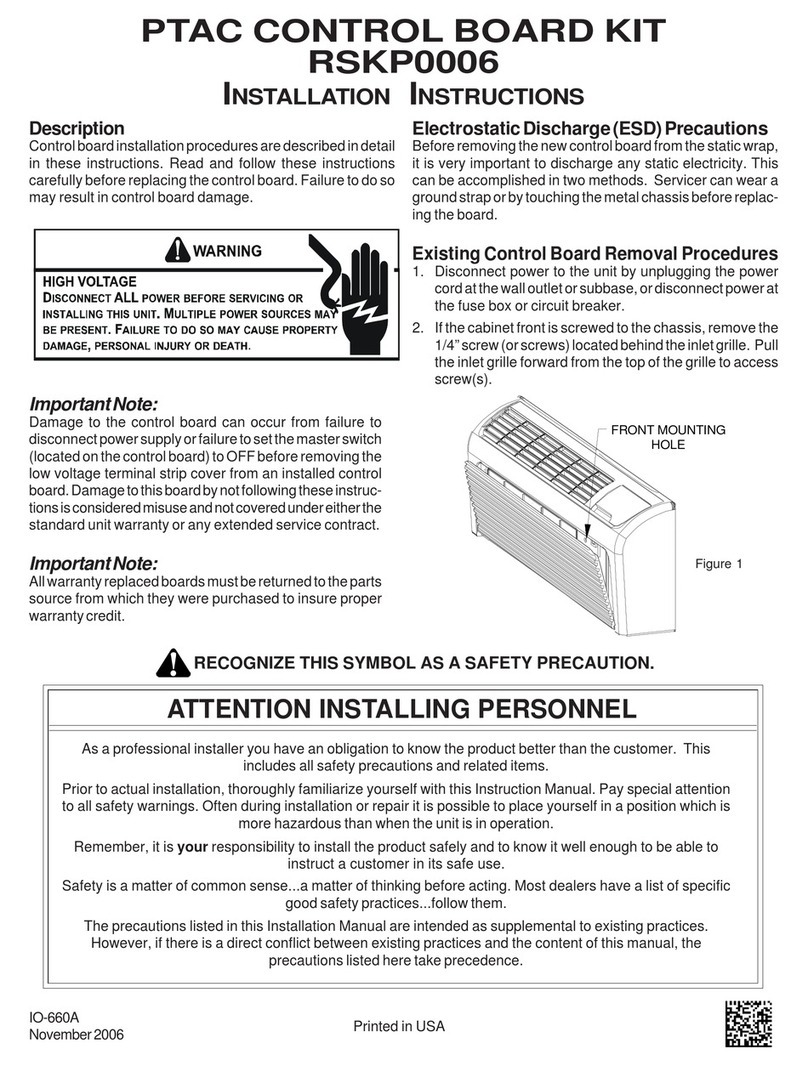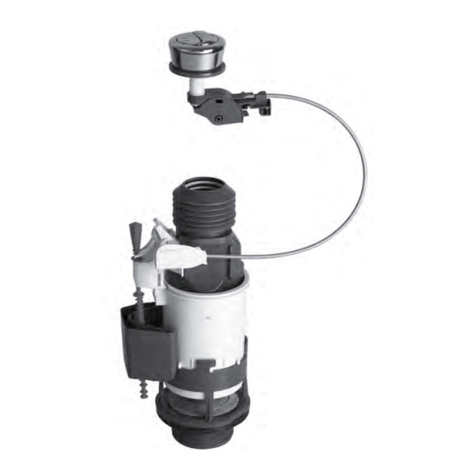Gascat DOMUS HF User manual

INSTALLATION & OPERATION MANUAL
PRESSURE REGULATOR VALVE
MODEL DOMUS HF

Installation and Operation Manual
Domus HF - Pressure Regulating Valve
MI-23
Elaborado
Verificado / Aprovado
CSQ
Data
Revisão
Página
JJ
VBL JM 15/12/17 00 2 de 19
INDEX
1 – INSTRUCTIONS PRIOR TO COMMISSIONING ................................................................................................................ 3
1.1 – SAFETY AND HEALTH ............................................................................................................................................. 3
1.1.1 – NOISE .............................................................................................................................................................. 3
1.1.2 – INSTALLATION ................................................................................................................................................ 4
1.1.3 – OPERATION ..................................................................................................................................................... 4
1.1.4 – MAINTENANCE ............................................................................................................................................... 4
2 – INTRODUCTION ............................................................................................................................................................ 5
2.1 – SCOPE OF MANUAL ............................................................................................................................................... 5
2.2 – DESCRIPTION ......................................................................................................................................................... 5
2.3 – SPECIFICATIONS ..................................................................................................................................................... 5
2.3.1 – AVAILABLE CONFIGURATIONS ........................................................................................................................ 5
2.3.2 – AVAILABLE CONNECTIONS ............................................................................................................................. 5
2.3.3 – TEMPERATURE LIMITS .................................................................................................................................... 6
2.3.4 – FLOW COEFICIENT .......................................................................................................................................... 6
2.3.5 – VALVE WEIGHT ............................................................................................................................................... 6
2.3.6 – MAXIMUM WORKING PRESSURE ................................................................................................................... 6
2.3.7 – PRESSURE REGULATOR SPRING RANGE (SET-POINT) ..................................................................................... 6
2.3.8 – ACCURACY AND LOCK UP ............................................................................................................................... 7
2.3.10 – PRESSURE REGULATOR DIMENSIONS .......................................................................................................... 7
3 – OPERATING PRINCIPLE ................................................................................................................................................. 8
3.1 –PILOT AND INTERNAL FILTER .................................................................................................................................. 9
4 – INSTALLATION............................................................................................................................................................. 10
4.1 – CHECKING SYSTEM INTEGRITY ............................................................................................................................ 10
4.2 – PRESSURE REGULATOR NAMEPLATE ................................................................................................................... 10
4.3 – FILTER .................................................................................................................................................................. 11
4.4 – CLEANING ............................................................................................................................................................ 11
4.5 – FLOW DIRECTION ................................................................................................................................................. 11
4.6 – SENSE LINE ........................................................................................................................................................... 12
4.7 – RECOMMENDED INSTALLATION LAYOUT ............................................................................................................ 13
4.8 COMMISSIONING AND START-UP ......................................................................................................................... 14
4.8.1 GENERAL RECOMMENDATIONS ...................................................................................................................... 14
4.8.2 COMMISSIONING ............................................................................................................................................ 14
4.8.3 ADJUSTMENT OF RESERVE (BY-PASS) LINE ..................................................................................................... 15
4.8.4 LIST OF RECOMMENDED TOOLS ..................................................................................................................... 15
5 – TROUBLESHOOTING ................................................................................................................................................... 16
6 – WARRANTY ................................................................................................................................................................. 17
7 – STORAGE ..................................................................................................................................................................... 17
8 – GENERAL RECOMMENDATION ................................................................................................................................... 17
9 – COMPONENTS & SPARE PARTS .................................................................................................................................. 17

Installation and Operation Manual
Domus HF - Pressure Regulating Valve
MI-23
Elaborado
Verificado / Aprovado
CSQ
Data
Revisão
Página
JJ
VBL JM 15/12/17 00 3 de 19
1 – INSTRUCTIONS PRIOR TO COMMISSIONING
It should be clearly understood that the information given under the Commissioning Instructions below do not intend to
revoke or substitute instructions laid by any relevant entity and reference should be made to the relevant Standards and/or
existent recommendations on this subject.
It is implied that before Commissioning the performance of the appropriate "Cleaning and Purification Procedures" will
be observed and all the instructions contained in "Pressurization" and "Labor Safety and Health Standards" shall be strictly
attended.
The recommendations of valves' suppliers, as for instance, "open slowly" or "open very slowly" should be strictly
observed.
1.1 – SAFETY AND HEALTH
Regulators, valves, and other pressurized components that contain toxic or flammable gases, or other hazardous
products, are potentially dangerous if not correctly operated and maintained. It is mandatory that all users of these
equipments are properly instructed and warned on their potential danger, and certify yourself that the personnel
responsible for installation, test, commissioning, operation, and maintenance of the plant are skilled enough to perform
their duties. Instruction manuals are provided for orientation of the operators, but it is supposed that they have a basic
knowledge level. If any doubts or ambiguities remain that could affect the proper procedures ask Gascat, which will be
pleased to instruct, or to provide the suitable service or instruction. NOT TO TAKE ANY RISK. Our telephone, fax
numbers, and e-mail are the following:
Gascat Indústria e Comércio Ltda.
Rodovia SP 73, 1141 – Indaiatuba / São Paulo.
CEP 13347-390 – Brazil
Phone: 55 19 3936-9300
Fax: 55 19 3935-6009
E-mail [email protected]
The comments below, while not completely inclusive, provide guidance on possible sources of risk to safety and health.
1.1.1 – NOISE
Regulators, valves, and other pressure reducers can produce high noise levels, which can be harmful to persons
exposed to them for long periods of time. Users should assure themselves that appropriate provisions will be taken, in
order to foresee health safety of employees and/or third parties, according to valid standards and recommendations.

Installation and Operation Manual
Domus HF - Pressure Regulating Valve
MI-23
Elaborado
Verificado / Aprovado
CSQ
Data
Revisão
Página
JJ
VBL JM 15/12/17 00 4 de 19
1.1.2 – INSTALLATION
All equipment, piping, and vessels are designed to support mechanical efforts, as, for instance, torque and bending
momentum, in addition to internal pressure. However, careful shall be exercised during installation not to develop
excessive efforts, which can cause cracks that may result in serious breakage when the regulator is put into operation.
Excessive tensions can also be caused if the equipment is overburden by piping, which should be otherwise appropriately
supported.
All regulators, shutoff valves, relief valves, etc., shall be installed taking into account the correct flow sense.
Impulse lines are important components of any control system and it is essential for them to be correctly installed
according to instructions.
Impulse lines should be appropriately supported to reduce excessive vibration, which can provoke fatigue breaks. They
should also be positioned so that they cannot serve as feet or hands supports. Impulse lines should be slightly sloping so
that liquids and condensates drain towards the main piping.
Auxiliary systems should not be changed, or modified, without knowledge of the operation conditions and permission of
the responsible in charge.
1.1.3 – OPERATION
Depending on the regulator type, its valve can be positioned fully open. Consequently, when a regulator is put into
operation, the shutoff valves should be open slowly so that the regulator valve can assume its regulating position. If the
valves are quickly opened the upstream pressure can pass downstream through the regulator and over-pressurize
downstream the main line.
All regulators, etc., should operate with the regulating spring specified by the manufacturer. This provision is particularly
important when operating relief or shutoff valves, since incorrect springs can hinder a relief valve to open and a shutoff
valve to close at the proper time.
Provisions should be taken to avoid water input through breathing and ventilation openings.
1.1.4 – MAINTENANCE
Regulators and valves contain gases at pressures that sometimes are higher than the atmospheric pressure. Before
trying to investigate any problem or to perform service maintenance of the equipment, they should be safely de-
pressurized. Besides, as most gases can be flammable, poisonous, corrosive, or somehow, dangerous, it may be
necessary to purge the installation with an inert gas, as nitrogen. Special precautions are necessary for operation with
oxygen or hydrochloric gas and the user should be reassured that appropriate procedures are implemented.
Eventually, it is not enough to isolate the high-pressure device, since high pressures can be retained downstream of
isolation valves. Do not try to remove covers, plugs, etc., before these parts are properly freed-up. Even so, it is advisable
to consider if high-pressure gas can be present at the time of removal of covers and plugs.

Installation and Operation Manual
Domus HF - Pressure Regulating Valve
MI-23
Elaborado
Verificado / Aprovado
CSQ
Data
Revisão
Página
JJ
VBL JM 15/12/17 00 5 de 19
Most regulators use spiral springs as the loading device. It is important to reduce the load of these springs relieving
their loaders as much as possible. In some cases, some residual load may last, even though the spring is relaxed to the
limits of its housing.
There is not a recommendation about the frequency to change the repair kit due several different variables in the
process that changes installation by installation as, for example, process gas quality, service conditions etc. The repair kit
should be changed when the regulator has problems during operation, as leakage, increase in set pressure and also
others that become the quality and regulator performance different.
However, Gascat recommends that after all regulators opening during maintenance service the repair kit must be
changed. It is also indicated to change a complete repair kit and not only specific part (example o’ring, shutter), to have the
all spare parts with same life time.
Gascat already inform to avoid all non original and genuine parts.
2 – INTRODUCTION
2.1 – SCOPE OF MANUAL
This Instruction manual has as objective supply information about operation, installation and maintenance about
DOMUS HF pressure regulator manufactured by GASCAT.
2.2 – DESCRIPTION
Domus HF pressure regulating valve was designed by Gascat’s Engineering to high inlet pressure up to 103 bar (1500
psig) whitout other need of orifice changing because of the balancing internals.
2.3 – SPECIFICATIONS
2.3.1 – AVAILABLE CONFIGURATIONS
DOMUS HF SC: Pilot operated pressure regulator spring to close (fail close).
DOMUS HF pressure regulators are classified as SC in accordance with standard DIN EN 334 directives, for fail
condition.
2.3.2 – AVAILABLE CONNECTIONS
ND FLANGE
ASME B16.5
FLANGE DIN
2633 THREAD
1”
150#/300#/600#
PN 16/25/40
NPT-F
2” -

Installation and Operation Manual
Domus HF - Pressure Regulating Valve
MI-23
Elaborado
Verificado / Aprovado
CSQ
Data
Revisão
Página
JJ
VBL JM 15/12/17 00 6 de 19
2.3.3 – TEMPERATURE LIMITS
Operating temperature: -20°C a 60°C
Ambient temperature: -20°C a 60°C
The temperature limits informed at this manual or in any applicable standard must not be exceeded under any
circumstances, at risk of damage the equipment, safety of installation and safety of people involved in the operation.
2.3.4 – FLOW COEFICIENT
DN KG
1” 200
2” 600
2.3.5 – VALVE WEIGHT
DN 150# / PN16 / NPT-F
1” 28 Kg
2” 38 Kg
2.3.6 – MAXIMUM WORKING PRESSURE
600#
103 bar
The pressure limit informed at this manual or in any applicable standard must not be exceeded under any
circumstances, at risk of damage the equipment, safety of installation and safety of people involved in the operation.
2.3.7 – PRESSURE REGULATOR SPRING RANGE (SET-POINT)
PILOT G31F
SPRING COLOR PART NUMBER RANGE
SILVER 01.49.61 0.7 – 2.8 bar
GREEN 01.49.65 2.0 – 5.0 bar
RED 01.49.64 4.5 – 14.0 bar
BROWN 01.49.33 7 – 18.3 bar

Installation and Operation Manual
Domus HF - Pressure Regulating Valve
MI-23
Elaborado
Verificado / Aprovado
CSQ
Data
Revisão
Página
JJ
VBL JM 15/12/17 00 7 de 19
PILOTO G-33F
SPRING COLOR PART NUMBER RANGE
BROWN 01.49.33 14.0 – 36.0 bar
BLACK 01.49.59 28.0 – 63.0 bar
2.3.8 – ACCURACY AND LOCK UP
Pressure regulator: AC up to 2,5% / SG up to 5%
2.3.10 – PRESSURE REGULATOR DIMENSIONS
DIMENSIONS (mm)
A (RF) B C D
ND 150# / PN16 150# / PN16 150# / PN16 150# / PN16
1” 184 327 290 280
2” 254 463 356 340
3” 298 501 356 340
General Tolerance = ±1,6

Installation and Operation Manual
Domus HF - Pressure Regulating Valve
MI-23
Elaborado
Verificado / Aprovado
CSQ
Data
Revisão
Página
JJ
VBL JM 15/12/17 00 8 de 19
3 – OPERATING PRINCIPLE
The pressure regulator Domus HF works by principle of pressure loading in the diaphragm upper chamber. The pilot
receives directly from the inlet pressure of the process and discharge in the diaphragm upper chamber the outlet pressure
(set point) desirable to the process. Such value is obtained using the pilot adjusting screw.
The bleed valve installed in the discharge line of pilot that is connected downstream the regulator in a connection in the
own body valve has the function to relief the excess of pressure in the diaphragm upper chamber.
Under the shutter there is a small spring responsible to keep it in the closed position that, for this, added to pressure
under the diaphragm (when there is no process gas comsumption). In this case it keeps the regulator in the closed position.
With gas comsumption there is a decrease in the pressure under the diaphragm. The diaphragm set moves downward
due of pressure in the diaphragm upper chamber and open the main valve allowing the process gas passage. Without gas
comsumption the pressure inder the diaphragm increase qualizing the forces in the diaphragm set and closing the main
valve.
FRONT VIEW

Installation and Operation Manual
Domus HF - Pressure Regulating Valve
MI-23
Elaborado
Verificado / Aprovado
CSQ
Data
Revisão
Página
JJ
VBL JM 15/12/17 00 9 de 19
3.1 –PILOT AND INTERNAL FILTER
The series G31F and G33F pilot are simple diaphragm type.
It is responsible for exact loading pressure for the pressure regulator open or close, under normal operating conditions,
based on equilibrium existence between the regulating spring force and the outlet pressure of sensing line.
The pressure under the pilot diaphragm, outlet pressure regulator, forces the pilot diaphragm set upward. In this
condition, the shutter shaft move upward due of shutter spring until contact the pilot seat, closing the pilot gas passage.
When there is gas consumption, this pressure under the diaphragm decrease and the regulating spring has enough
force to move the shaft downward and open the pilot. In this condition, the pressure in the upper chamber of main valve will
be higher than the pressure under the diaphragm of main valve, and allow that the main valve open to feed the process
gas demand.
The G31F and G33F pilot is composed of internal filter element, which objective is to avoid that particles present in the
process gas damage the shutter, seat of diaphragm set.
In case of damage in the shutter or pilot seat can occur a small gas passage resulting in increase in outlet pressure.
Then, in case of pressure relief during absence of gas consumption or shutting down of slam shut valve these parts shall
be inspected through inspection cover.
The pilot diaphragm rupture result in pressure equalization under and above the diaphragm, resulting in possible pilot
opening, since the regulating spring force moves the diaphragm set downward to open the pilot.
Shutter
Spring
Shutter
Seat
Filter
Element
Adjuting
Spring
Relief
Adjusting
Screw
Diaphragm
Shaft

Installation and Operation Manual
Domus HF - Pressure Regulating Valve
MI-23
Elaborado
Verificado / Aprovado
CSQ
Data
Revisão
Página
JJ
VBL JM 15/12/17 00 10 de 19
4 – INSTALLATION
4.1 – CHECKING SYSTEM INTEGRITY
Before installing the pressure regulator it’s necessary to insure that:
1) The equipment are in perfect conditions or has evidences of damage during the transport, in case of
perceptible damage in the equipment do not proceed with installations and get in contact with GASCAT.
2) The space provided for the acess and installation of equipment is appropriate, including future maintenance.
3) The installation was designed to support the load imposed by the equipment.
4) The inlet and outlet pipe connections are in the same level.
5) All connections for sense line and discharge line requested by the model of pressure regulator are arranged in
the pipeline and respect the dimensions provided by manufacturer.
6) Was arranged pressure indicators at the inlet and outlet of the pressure regulator to insure the correct
adjustment of set point during the commissioning.
7) Was arranged a vent line between the pressure regulator and the first block valve in the outlet of stream to help
the operator during the start-up.
8) Check the flow direction in the valve body and pay attention in the installation to assure that the valve are in the
correct position.
4.2 – PRESSURE REGULATOR NAMEPLATE
Before installation, checking is recommended to ascertain that the conditions of use are in conformity with the
specifications of the equipment. These specifications are recalled with the symbols on the plate fitted on pressure
regulator.

Installation and Operation Manual
Domus HF - Pressure Regulating Valve
MI-23
Elaborado
Verificado / Aprovado
CSQ
Data
Revisão
Página
JJ
VBL JM 15/12/17 00 11 de 19
4.3 – FILTER
We recommended the installation of a basket type filter, with minimum 150 mesh, as close as possible to the regulator
input, without being joined flange to flange, because, if the filter is installed immediately upstream of the regulator, it can
produce turbulence that will cause disturbances in the pressure control of the regulator. Care with the filter installation is
essential to the perfect operation of the apparatus, because, particles eventually found in the piping can lodge themselves
the seat and the shutter, damaging them and producing direct flow.
4.4 – CLEANING
Check piping cleaning before the installation of the regulator. We recommended a complete purge of the line with
nitrogen or compressed air.
4.5 – FLOW DIRECTION
It is necessary to verify the flow direction before installing the regulator; this information could be found into marks in the
equipment body.
The pressure regulator model DOMUS HF is designed to work in the horizontal position with the actuator in the top
position.

Installation and Operation Manual
Domus HF - Pressure Regulating Valve
MI-23
Elaborado
Verificado / Aprovado
CSQ
Data
Revisão
Página
JJ
VBL JM 15/12/17 00 12 de 19
4.6 – SENSE LINE
The pressure regulator model DOMUS HF was designed by GASCAT engineering in order that just one connection
must be done out the own regulator, the sense line. See the image below:
The correct positioning of pressure regulators sense line in the pipeline is essential for the proper functioning of the
pressure regulator, for this reason it’s important to install the impulse take at a distance of 5 times the nominal pipe
diameter from the outlet of pressure regulator at a pipe stretch free from obstruction, with a pipe diameter sized to a
velocity not higher than 25 m/s (considering the minimum pressure and the maximum flow)
The connections of DOMUS HF sense line is normally supplied for 10 mm OD pipe, however other connections could
be arranged under consult.
We recommend to not use pulse pick-up downstream of regulator with orifices with nominal diameter less than 3/8”.
Note: The distance and gas velocity recommended at this manual for the impulse take are generic, other values for
distance and velocity could be used under GASCAT analysis of installation, for more information get in contact
with GASCAT.
PRESSURE REGULATOR
SENSE LINE
We do not recommend installations of any type of block valve in the
sensing lines.
INLET PRESSURE
OUTLET PRESSURE

Installation and Operation Manual
Domus HF - Pressure Regulating Valve
MI-23
Elaborado
Verificado / Aprovado
CSQ
Data
Revisão
Página
JJ
VBL JM 15/12/17 00 13 de 19
4.7 – RECOMMENDED INSTALLATION LAYOUT
It is recommended for a safety installation:
1. Manual On-Off valve (sphere or similar) 6. Gauge (for outlet pressure)
2. Filter (with drain if possible) 7. Purge valve ND ½’’
3. Gauge (for inlet pressure) 8. Partial Pressure Relief Valve (Relief Argos)
4. Slam-shut Valve (model GIPS-PH) 9. Manual On-Off valve (sphere or similar)
5. Pressure Regulator (Domus HF)
5 DN
1
2
3
4
5
6
7
8
9
5 DN

Installation and Operation Manual
Domus HF - Pressure Regulating Valve
MI-23
Elaborado
Verificado / Aprovado
CSQ
Data
Revisão
Página
JJ
VBL JM 15/12/17 00 14 de 19
4.8 COMMISSIONING AND START-UP
4.8.1 GENERAL RECOMMENDATIONS
Before proceeding with commissioning of equipment, it is important always:
1) Verify if the equipment is properly installed according to the recommendations hereby described.
2) Close the blocking valves of inlet, outlet and by-pass, when application, of each stream.
3) Open the vent valve downstream the last regulator in the respective stream.
4) Certify that the Skid is NOT pressurized.
ATENTION:
* Under none hypotheses proceed with the stream pressurization where the equipment is installed by the
valve downstream the equipment.
* Under none hypotheses proceed with the stream pressurization where the equipment is installed by the
valve upstream the equipment, as drain filer, for example.
5) Verify if all connectors are properly tight before proceed with stream pressurization.
6) Verify if all equipment installed are adequate to the operating conditions, based on nameplate data attached in
each equipment.
7) Verify if SSV (slam shut valve) is in the closed position.
GASCAT SSV are supplied already adjusted, however, due of transport conditions and equipment
handling it can be changed.
So that, it is recommended to verify the set-point of SSV using (for example) external pneumatic source
directly in the actuator before proceed with stream pressurization.
DOMUS regulator is NOT supplied adjusted. It tends to preserve the life time of some internal parts. It
means that the pressure regulator must be adjusted previously before operation.
4.8.2 COMMISSIONING
Utilizing as reference the assembly layout presented in the item 4.7 proceed with the descriptive indicate for
commissioning of DOMUS HF pressure regulator, considering that the recommendations in the item 4.6.1 of this
manual were properly observed.
Such procedure considers the utilization of DOMUS with G30F pilot.
1) Close the vent valve.
As the blocking valves of the stream are closed utilize the vent valve to simulate a low flow and proceed with
regulator adjusting before regulating the stream.
2) Verify if the adjusting spring pilot is released (with no charge).
Releasing the adjusting spring assure that the regulator will remain closed when pressurized.
3) Reset the SSV (slam shut valve).
4) Open SLOW AND GRADUALLY the inlet block valve, or when there is a by-pass for the inlet valves in the
Skid utilize it to pressurize the stream.
5) At this stage, the inlet pressure will achieve the regulator inlet, therefore it will remain closed because of this
no pressure downstream.
6) Adjust the pilot turning clockwise the adjusting spring. Assisted by the outlet pressure gauge in the outlet
pressure adjust the pressure 58 psi (4 bar) above the desired set point.
For example, if the set point is 217 psig (15 bar) the pre-regulator shall adjust 275 psi (19 bar).
7) Adjust the G30F/G32F pilot turning clockwise the regulating spring. Do it slowly in order to admit low pressure
downstream the pressure regulator; utilize the pressure gauge in the pipe checking the increase in pressure
until the desired set point.
8) Open the vent valve around 20%, and verify if the pressure remain in the value adjusted.

Installation and Operation Manual
Domus HF - Pressure Regulating Valve
MI-23
Elaborado
Verificado / Aprovado
CSQ
Data
Revisão
Página
JJ
VBL JM 15/12/17 00 15 de 19
9) Since the pressure is adjusted, open the vent valve ½” turn and verify the pressure regulating.
10) If the pressure is according to the desired set point, close the vent valve slowly to check the regulator lock up.
Make this procedure 3 times before proceeding to the next step.
11) With the line pressurized and the blocking valves closed verify if there is leak in the connectors and other
fittings of the respective stream.
12) Open SLOW AND GRADUALLY the outlet blocking valve to release the stream for operation.
4.8.3 ADJUSTMENT OF RESERVE (BY-PASS) LINE
When the regulator is installed in a reserve (by-pass) line it is recommended to realize the same procedure
informed in the item 4.8.2, however the set point of pressure regulator shall be adjusted 10% – 20% less than the
set point of regulator of working stream.
After this, open SLOW AND GRADUALLY the outlet blocking valve then the downstream pressure of regulator
equalize the reserve (by-pass) stream with the pressure of working stream; the by-pass regulator will remain
closed.
To make the regulator in the reserve (by-pass) line assumes the regulating pressure of the system, turn clockwise
the regulating spring, slowly, until the set point of this regulator achieve a value superior than the set point of
regulator of working stream; in this case, the regulator in the reserve line will open slowly and assume the
pressure regulating.
It is important that both regulators keep with difference in set point of at least 5% - 10%, avoiding over position in
set point, resulting in looping between the two streams where while one regulator is working the other is trying and
vice-versa.
Note: the values hereby informed are basic recommendations based on good practices, however the set points
can be changed with previous consult and approval of GASCAT.
4.8.4 LIST OF RECOMMENDED TOOLS
For set point adjusting, commissioning and start up of pressure regulators model DOMUS it is necessary the
combined tool of 19 mm for spring adjusting of pilot G31F & G33F.
DOMUS regulator is supplied with connectors for sensing line of DN 10 mm, therefore it is recommended the
utilization of combined tools 18mm and 19mm for sensing lines.
DN 1 2
1” & 2” 18mm, 19mm 1”
1
2

Installation and Operation Manual
Domus HF - Pressure Regulating Valve
MI-23
Elaborado
Verificado / Aprovado
CSQ
Data
Revisão
Página
JJ
VBL JM 15/12/17 00 16 de 19
5 – TROUBLESHOOTING
To maintain the pressure regulator in the correct conditions of operation, the pressure regulators model
DOMUS HF must be submitted to preventive maintenance, the periodicity depends of the flow, quantity/type of
contaminants and the operation conditions.
Defect Cause Correction
Vibration
Problems in the installation
Verify if the pipe is correctly supported, if the
vibration doesn’t come from other devices or if it is
inadequate sizing of some equipment.
Damaged diaphragm or stem
assembly of main valve damaged Change the damaged pieces.
Outlet Pressure Variation
Low flow (less than 5% of
maximum flow)
Verify the regulator sizing (check if is available a
reduced orifice).
Sensing line installed wrongly Verify if the sensing line is too close of main valve
of near of an equipment that my cause flow turbulence
Bleed valve wrongly adjusted
Proced the adjustment of bleed valve with the
regulator operating (working) to find the best position oo
work.
Direct passage through
the regulator or main
valve totally opened
Main regulator stem locked Verify the respective stem and change it if
necessary.
Sensing line damaged Verify the sensing line and change it if necessary.
Outlet drop pressure /
non-enough flow Filter element dirty Clean or change the filter element.
No Flow and No Outlet
Pressure Main diaphragm damaged Change the main diaphragm.
Outlet pressure increase /
Direct passage
Particles between obturator /
seat or these parts damaged
Remove the inspection cover and obturator and
clean the components (obturator e seat).
Verify all other components and change if
necessary.
Particles between obturator /
seat or these parts damaged
Remove the pilot balancin, clean it or change if
necessary.

Installation and Operation Manual
Domus HF - Pressure Regulating Valve
MI-23
Elaborado
Verificado / Aprovado
CSQ
Data
Revisão
Página
JJ
VBL JM 15/12/17 00 17 de 19
6 – WARRANTY
We warrant our products, for a 12 months period from the date of invoicing, if the products are in operation, extending
the warrant up to 18 months, in case they are in stock. Such warranty only covers those cases for which the occurrence of
production defects are evidenced, which remained unnoticed at the time the product delivery.
To present warranty is not valid if it is found that the defect or mishap was caused by accident, normal wear,
inadequate installation, improper maneuvering or use, inadequate storage, assembly disregarding technical standards or if
the buyer undertook repairs or changes in equipment by himself, without the manufacturer's previous authorization.
The information contained in this manual contains Gascat's supply conditions, independently of the verified
performance.
The information herein contained shall not be interpreted or suggest performance warranty in relation to the final
products, or the system usage purpose, nor should they serve as usage recommendation for any product or process
mentioned in the specifications. This system should only be operated by qualified technician trained for this purpose; and
no changes that may affects the system safety can be executed without our previous authorization.
GASCAT Ind and Com. Ltda. withhold the right to make changes without notice, introducing improvements in the
described products drawings or specifications.
7 – STORAGE
The regulators should not suffer mechanical shock, not to risk internal components' damages.
The regulators should be stored at a clean and dry place, protected from bad weather
8 – GENERAL RECOMMENDATION
1) We test our regulators and valves at the requested operation conditions.
2) Criteria and maintenance steps are contained in manuals, however, for any doubt on the use, operation, or
maintenance, contact Gascat's technical department that will give you proper guidance.
3) Gascat supplies, on request, a complete replacement kit.
9 – COMPONENTS & SPARE PARTS
Find below the components positions and spare parts components of DOMUS HF and PILOT-G31F/G33F.

Installation and Operation Manual
Domus HF - Pressure Regulating Valve
MI-23
Elaborado
Verificado / Aprovado
CSQ
Data
Revisão
Página
JJ
VBL JM 15/12/17 00 18 de 19
POS. DESCRIPTION QTY
1 DIAPHRAGM 1
2 SHUTTER 1
3 FILTER ELEMENT
1
4 PARBAK 1
5 O’RING 1
6 O’RING 1
7 O'RING 1
8 O'RING 1
9 O'RING 1

Installation and Operation Manual
Domus HF - Pressure Regulating Valve
MI-23
Elaborado
Verificado / Aprovado
CSQ
Data
Revisão
Página
JJ
VBL JM 15/12/17 00 19 de 19
PRE PILOT G-31F/G33F → CODE:
28.20.41F
POS.
DESCRIPTION QTY
1 RELIEF 1
2 DIAPHRAGM 1
3 SHUTTER 1
4 FILTER ELEMENT 1
5 O'RING 1
6 O'RING 1
7 O'RING 1
8 O’RING 1
9 O’RING 1
Table of contents
Other Gascat Control Unit manuals
Popular Control Unit manuals by other brands
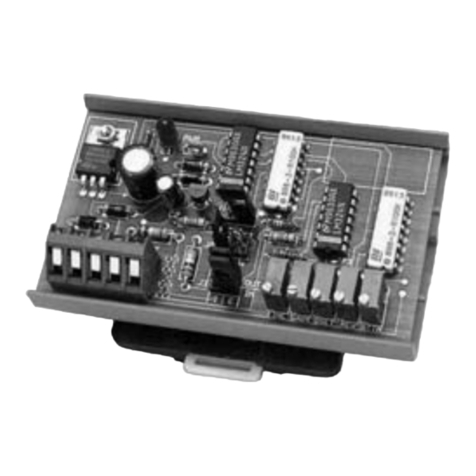
Sontay
Sontay IO-AUD quick start guide
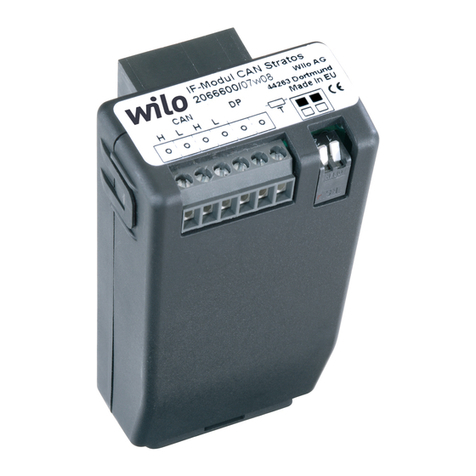
Wilo
Wilo IF-Modul Stratos CAN Installation and operating instructions

Miranda
Miranda NV5100MC Master Control user guide
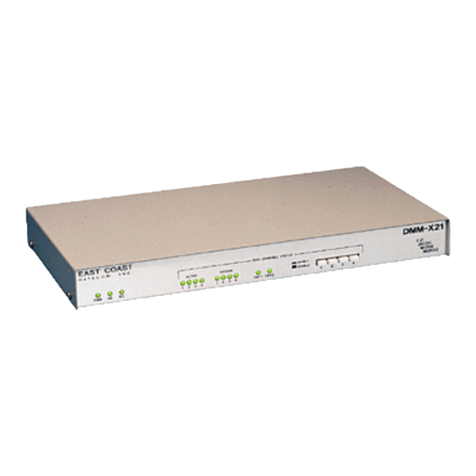
East Coast Datacom
East Coast Datacom DMM-X21 Operation manual
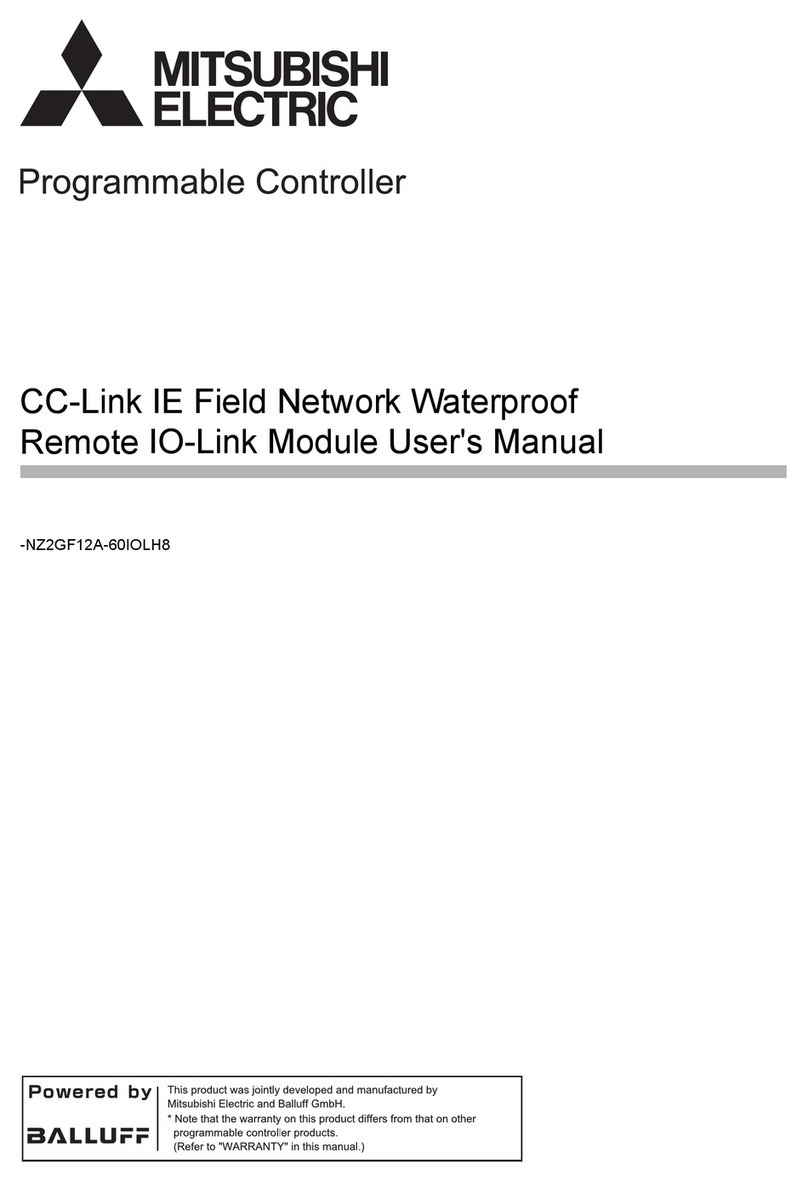
Mitsubishi Electric
Mitsubishi Electric CC-Link IE Field NZ2GF12A-60IOLH8 user manual
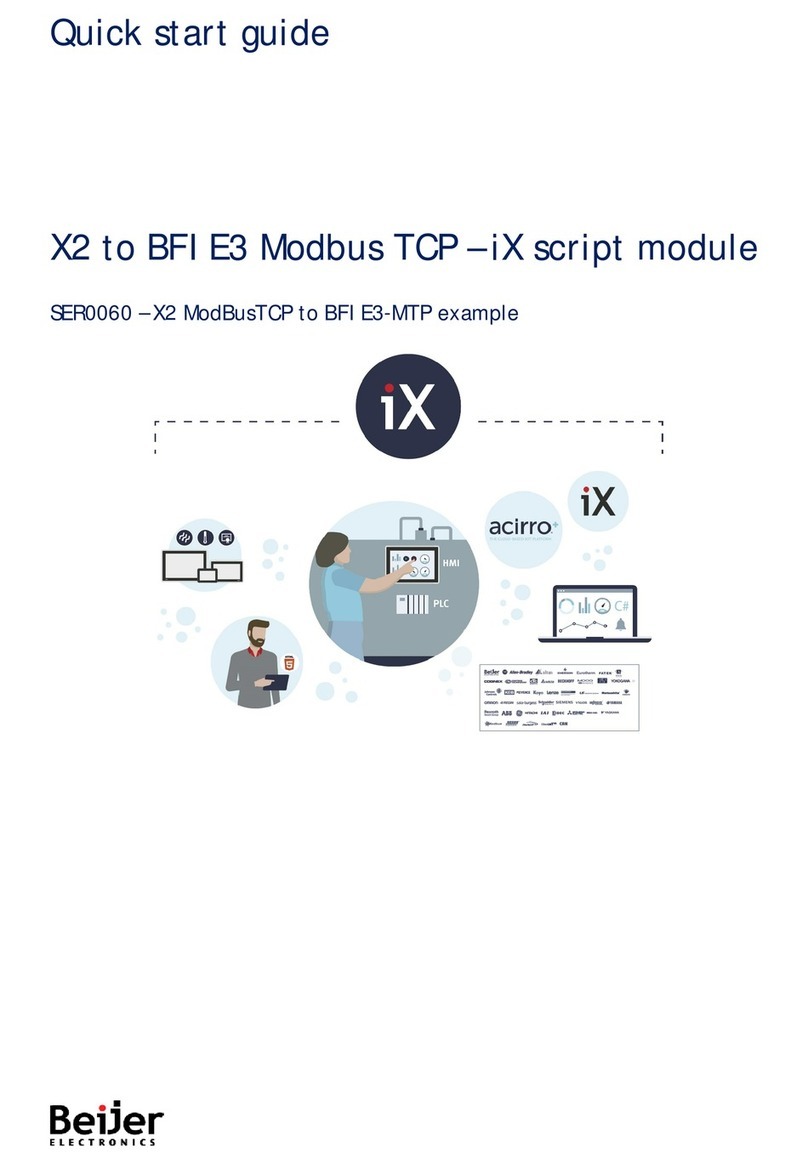
Beijer Electronics
Beijer Electronics SER0060 quick start guide
